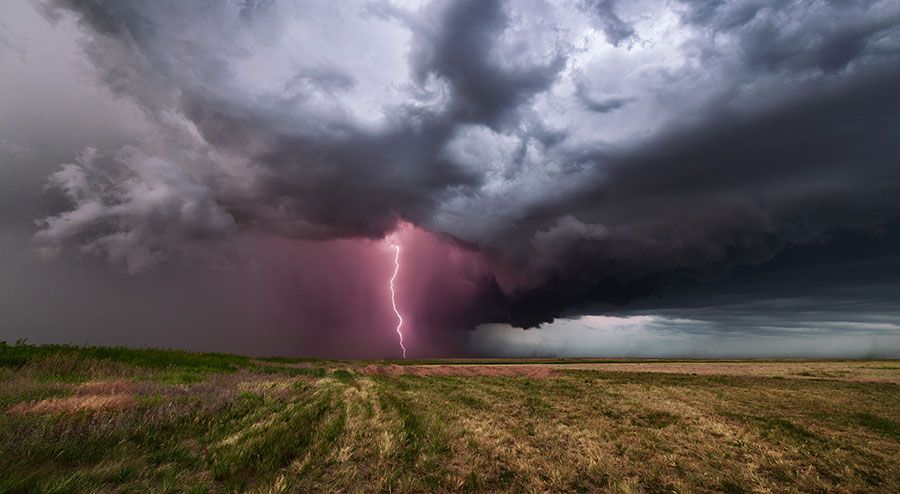Given the speed and scale with which climate impacts are being felt around the globe, emerging economies—or any economy for that matter—no longer have the luxury of planning for their energy systems as though climate change doesn’t matter and won’t impact it in fundamental ways. Current and future climate change impacts are now part and parcel of electricity system management, and must be central to high-level discussions starting next month — including at the Global Climate Action Summit and the Climate Vulnerable Forum Summit.
Fortunately, the global energy sector is on the cusp of a transformation not seen since the Industrial Revolution. This revolution in energy technology extends far beyond the astonishing cost declines of renewable energy in the past decade to an emerging global power system driven by dramatic innovation and disruption in both hardware and software. This revolution will be characterized by large-scale deployment of modular, decentralized, cleaner, and more affordable energy generation, storage and local control capabilities, combined with a dizzying array of new technologies; the full impacts of which are only beginning to be grasped. Blockchain, mobile money, transactive energy, smart grids, virtual power plants, the internet of things, all stand to reshape how we generate, consume, and transact energy in as of yet untold ways. Clean Energy microgrids are at the center of this revolution.
At the same time, the dramatically accelerating impacts of climate change and its attendant increases in natural disasters and extreme weather events is reshaping how governments and the private sector think about energy system development and evolution. For example, hydropower makes up 95 percent of Zambia’s power supply, but due to El Nino in 2016, water levels dropped to 13 percent of their usual capacity, resulting in widespread power outages. The City of Los Angeles in California experienced a scorching heat wave just last month, spiking energy demand for cooling so much higher than usual that the grid crashed, and stayed crashed for days, leaving tens of thousands of residents without power. And of course, devastating hurricanes Irma and Maria decimated the island of Puerto Rico’s electricity infrastructure in 2017, and left a crippled energy system for more than a year, and as a result, a crippled economy and a population in despair.
Micro-grids are a key element of effective climate change resilience and decarbonization strategies. Deployment of behind-the-meter distributed generation and storage that is capable of operating autonomously in the event of a natural disaster through a micro-grid controller can offer not just continuous power in the event of significant grid disruption or outage, but important disaster response services and critical infrastructure protection, such as hospitals and water treatment facilities. Micro-grids can also provide load and demand curve management, frequency regulation, and enhancement of everyday operations of the grid. While not a panacea, they are a critical part of the cure.
Micro-grids offer vitally important climate mitigation, resilience and energy access services that are uniquely designed to meet the needs of the communities they serve. They have vital roles to play in both grid-tied and grid-integrated mitigation and climate resilience applications, as well as rural electrification and energy access strategies.
The hub and spoke model of fossil fuel-based generation and transmission that has driven the substantial economic growth in the developed world, now looks anachronistic at best and a pledge to lock in decades of high-emitting, inefficient, expensive and climate-vulnerable energy infrastructure at worst.
Micro-grids will underpin the energy technology revolution and enable the new, decentralized energy systems of tomorrow to function. They offer a unique opportunity for emerging economies to leapfrog the failing energy strategies of the 20th Century and deploy the clean, climate-resilient, reliable and affordable energy systems of the future. This promise is in reach, but will require a fundamental rethinking of traditional energy system development and a high degree of collaboration across governments, international donor countries and the private sector to mobilize the risk capital needed to drive wide-scale deployment.
African and Asian governments have the opportunity to drive innovation and large-scale deployment of micro-grids as a 21st Century energy solution and lead the world. The Global Climate Action Summit in San Francisco next month is the ideal location to consider new opportunities for public-private collaboration and gives leading philanthropies and donors a forum to step up and support these efforts.
Given the speed and scale with which climate impacts are being felt around the globe, emerging economies—or any economy for that matter—no longer have the luxury of planning for their energy systems as though climate change doesn’t matter and won’t impact it in fundamental ways. Current and future climate change impacts are now part and parcel of electricity system management, and must be central to high-level discussions starting next month — including at the Global Climate Action Summit and the Climate Vulnerable Forum Summit.
Fortunately, the global energy sector is on the cusp of a transformation not seen since the Industrial Revolution. This revolution in energy technology extends far beyond the astonishing cost declines of renewable energy in the past decade to an emerging global power system driven by dramatic innovation and disruption in both hardware and software. This revolution will be characterized by large-scale deployment of modular, decentralized, cleaner, and more affordable energy generation, storage and local control capabilities, combined with a dizzying array of new technologies; the full impacts of which are only beginning to be grasped. Blockchain, mobile money, transactive energy, smart grids, virtual power plants, the internet of things, all stand to reshape how we generate, consume, and transact energy in as of yet untold ways. Clean Energy microgrids are at the center of this revolution.
At the same time, the dramatically accelerating impacts of climate change and its attendant increases in natural disasters and extreme weather events is reshaping how governments and the private sector think about energy system development and evolution. For example, hydropower makes up 95 percent of Zambia’s power supply, but due to El Nino in 2016, water levels dropped to 13 percent of their usual capacity, resulting in widespread power outages. The City of Los Angeles in California experienced a scorching heat wave just last month, spiking energy demand for cooling so much higher than usual that the grid crashed, and stayed crashed for days, leaving tens of thousands of residents without power. And of course, devastating hurricanes Irma and Maria decimated the island of Puerto Rico’s electricity infrastructure in 2017, and left a crippled energy system for more than a year, and as a result, a crippled economy and a population in despair.
Micro-grids are a key element of effective climate change resilience and decarbonization strategies. Deployment of behind-the-meter distributed generation and storage that is capable of operating autonomously in the event of a natural disaster through a micro-grid controller can offer not just continuous power in the event of significant grid disruption or outage, but important disaster response services and critical infrastructure protection, such as hospitals and water treatment facilities. Micro-grids can also provide load and demand curve management, frequency regulation, and enhancement of everyday operations of the grid. While not a panacea, they are a critical part of the cure.
Micro-grids offer vitally important climate mitigation, resilience and energy access services that are uniquely designed to meet the needs of the communities they serve. They have vital roles to play in both grid-tied and grid-integrated mitigation and climate resilience applications, as well as rural electrification and energy access strategies.
The hub and spoke model of fossil fuel-based generation and transmission that has driven the substantial economic growth in the developed world, now looks anachronistic at best and a pledge to lock in decades of high-emitting, inefficient, expensive and climate-vulnerable energy infrastructure at worst.
Micro-grids will underpin the energy technology revolution and enable the new, decentralized energy systems of tomorrow to function. They offer a unique opportunity for emerging economies to leapfrog the failing energy strategies of the 20th Century and deploy the clean, climate-resilient, reliable and affordable energy systems of the future. This promise is in reach, but will require a fundamental rethinking of traditional energy system development and a high degree of collaboration across governments, international donor countries and the private sector to mobilize the risk capital needed to drive wide-scale deployment.
African and Asian governments have the opportunity to drive innovation and large-scale deployment of micro-grids as a 21st Century energy solution and lead the world. The Global Climate Action Summit in San Francisco next month is the ideal location to consider new opportunities for public-private collaboration and gives leading philanthropies and donors a forum to step up and support these efforts.

Alexia Kelly is founder and CEO of Electric Capital Management, and Managing Director of Microgrid Investment Accelerator
